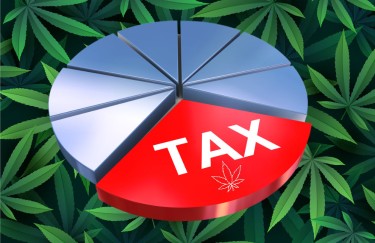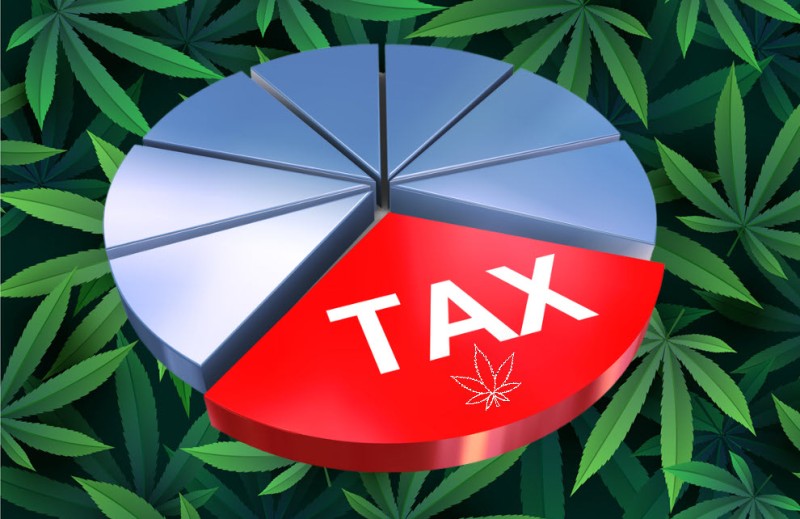
Where do marijuana taxes actually go?
Taking a deep dive into Colorado, a state that has had legal cannabis sales for over a decade, may open a window on how cannabis taxes are helping millions of people in the community.
Starting from 2012, following the passage of Amendment 64 by Colorado voters, which marked the pioneering legalization of adult-use, recreational marijuana sales in the United States, the state has achieved an impressive milestone by exceeding $10 billion in cumulative sales. This accomplishment not only stands as a substantial triumph and a tangible demonstration of the potential viability of the future American cannabis sector, but it has also contributed billions in tax proceeds to the coffers of Colorado.
Despite the economic challenges brought about by the pandemic, 2020 witnessed a remarkable upsurge in marijuana sales. This positive trend continued into January 2021, as the state of Colorado set new benchmarks, with marijuana sales hitting a noteworthy $187.5 million.
Over the past six years, Colorado, often called the Centennial State, has amassed a sum exceeding $1.6 billion in marijuana taxes and fee revenues, primarily at the state level. This previously untapped revenue source played a pivotal role in persuading Colorado voters to endorse the legalization of recreational cannabis back in 2012. Consequently, a key question arises: How has Colorado allocated these newfound tax revenues during the last six years?
Colorado Cannabis Tax Revenue Allocation
A comprehensive examination of Amendment 64 is imperative to understand Colorado's tax revenue allocation. This legal text outlined Colorado's taxation framework, which involved imposing a 2.9 percent sales tax on medical and recreational cannabis transactions. A 15% excise tax was also established to move cannabis from cultivators to retailers. It's worth noting that the 2.9 percent sales tax from medical marijuana was directed into the Marijuana Tax Cash Fund.
Pertinent to Amendment 64, the initial $40 million or 90 percent, whichever was of greater value, was designated for allocation to a capital construction grant program. This initiative facilitated schools, districts, and diverse educational providers in seeking funding to create new structures or refurbish existing facilities.
As for the 15% special sales tax on recreational cannabis, the resulting funds were channeled into the state's general fund after accounting for a localized portion. A portion of this fund was assigned to the Department of Education's State Public School Fund, while the remainder was directed back to the Marijuana Tax Cash Fund.
Since the legalization of retail cannabis sales in 2012, 16.4 percent of the budget allocated to the Marijuana Tax Cash Fund has been devoted to educational initiatives. A further provision, highlighted by the Colorado Sun, involved allocating $25 million towards assisting school districts in establishing comprehensive full-day kindergarten programs.
An interesting facet of this fund allocation is the provision of more than $2.2 million to the state Department of Agriculture. This funding facilitated the state's industrial hemp regulatory efforts and the certification program for hemp seeds. It's worth recalling that Colorado's legalization of industrial hemp preceded the federal legalization provided by the 2014 Farm Bill.
The distribution of marijuana tax dollars varies across different jurisdictions within Colorado. In the period spanning from 2014 to 2019, Denver, for instance, allocated approximately $29 million of its marijuana tax revenue to regulate and enforce marijuana-related activities. An additional $16 million was earmarked for youth prevention programs. Before 2017, these two categories represented the exclusive recipients of marijuana tax dollars outside the general fund.
After 2017, there was a notable diversification in fund allocation. Specifically, $16 million was directed towards supporting affordable housing initiatives, $3.1 million was designated for addressing opioid intervention efforts, and $19 million was channeled into enhancing city capital improvements. This underlines the evolving nature of how Colorado has chosen to allocate its marijuana tax revenue over time.
Colorado's Forward Thinking Approach
The decision to legalize recreational marijuana in Colorado has brought about more than just a shift in personal freedoms; it has established a lucrative source of revenue for the state.
A noteworthy aspect of this revenue structure is that ten percent of the 15% marijuana retail tax is designated for local governments. This allocation is determined proportionally based on the volume of marijuana sales in each region. This inclusive taxation framework serves a broader purpose beyond the cannabis industry alone.
A significant portion of the profits from cannabis-related activities is directed into the marijuana tax cash fund. This fund operates with a strategic distribution approach, addressing a broad spectrum of state requirements, as documented by sources such as the Colorado Department of Revenue. Through this well-balanced distribution mechanism, the positive impact of marijuana sales is extended to various sectors.
The influence of the cannabis industry doesn't merely remain confined to its immediate boundaries. The substantial influx of tax revenue triggers growth in sectors that extend beyond cannabis itself. It injects vitality into infrastructure development, allocates funds to education initiatives, and serves as a foundation for other essential public services. In essence, this dynamic showcases how Colorado has meticulously structured a system where the legalization of marijuana doesn't solely benefit the industry but amplifies its positive influence to encompass society as a whole.
Conclusion
While it's true that the tax revenue stemming from marijuana sales in Colorado currently represents a fraction of the state's budget, it's essential to recognize that this revenue stream was entirely nonexistent just a decade ago. As is the case even now, many states have witnessed countless untaxed transactions occurring within the black market. In this context, Colorado stands out for pioneering a legal and regulated adult-use cannabis market, which has translated into billions of dollars in tax contributions for the state.
It's crucial to consider the trajectory of this revenue potential, especially when contemplating the projections that suggest significant growth in the U.S. cannabis industry over the next decade. Pairing this with the fact that Colorado saw record-breaking sales in 2020, it becomes evident that we have only begun to tap into the immense potential of future revenues. With a burgeoning market, the prospect of federal cannabis policy reform, and the gradual dismantling of the stigma surrounding cannabis, the United States' cannabis industry is undeniably in its nascent stage. The horizon appears exceedingly promising, signifying we're just at the outset of what this industry can become. The future holds remarkable potential.
CANNABIS TAX SHARING, WHAT IS FAIR, READ ON...
SHOULD TOWNS THAT BAN DISPENSARIES GET WEED TAX REVENUE CHECKS?







